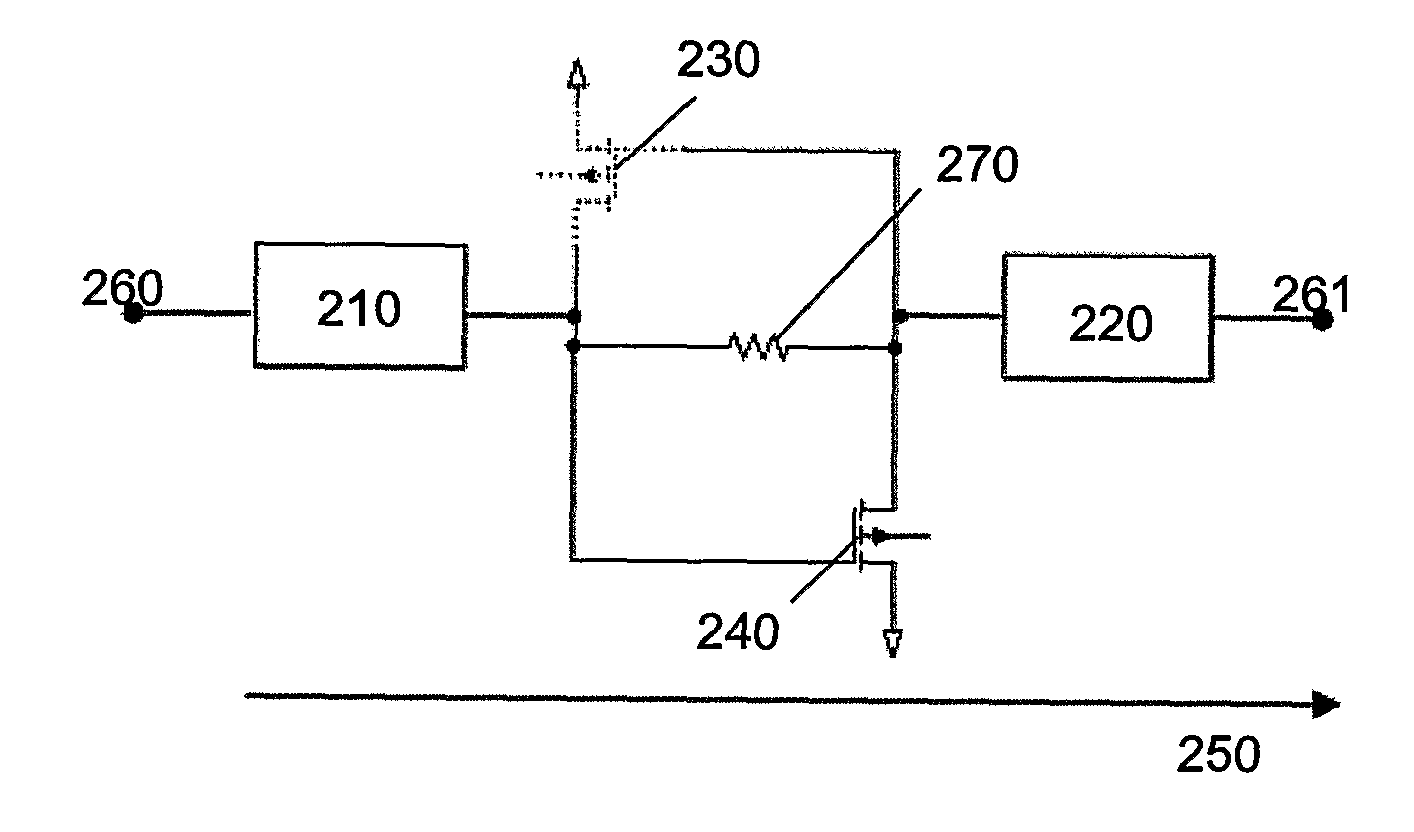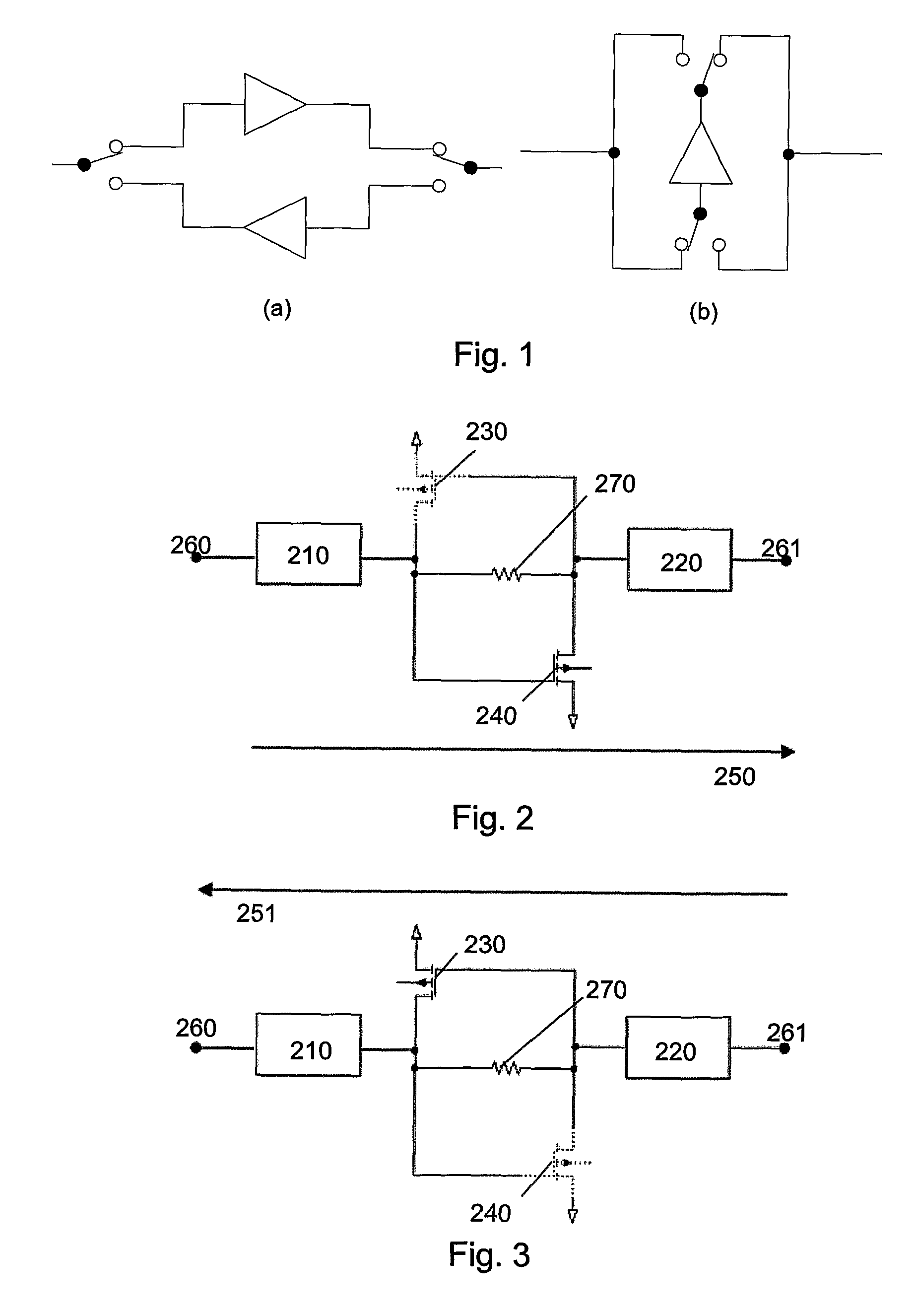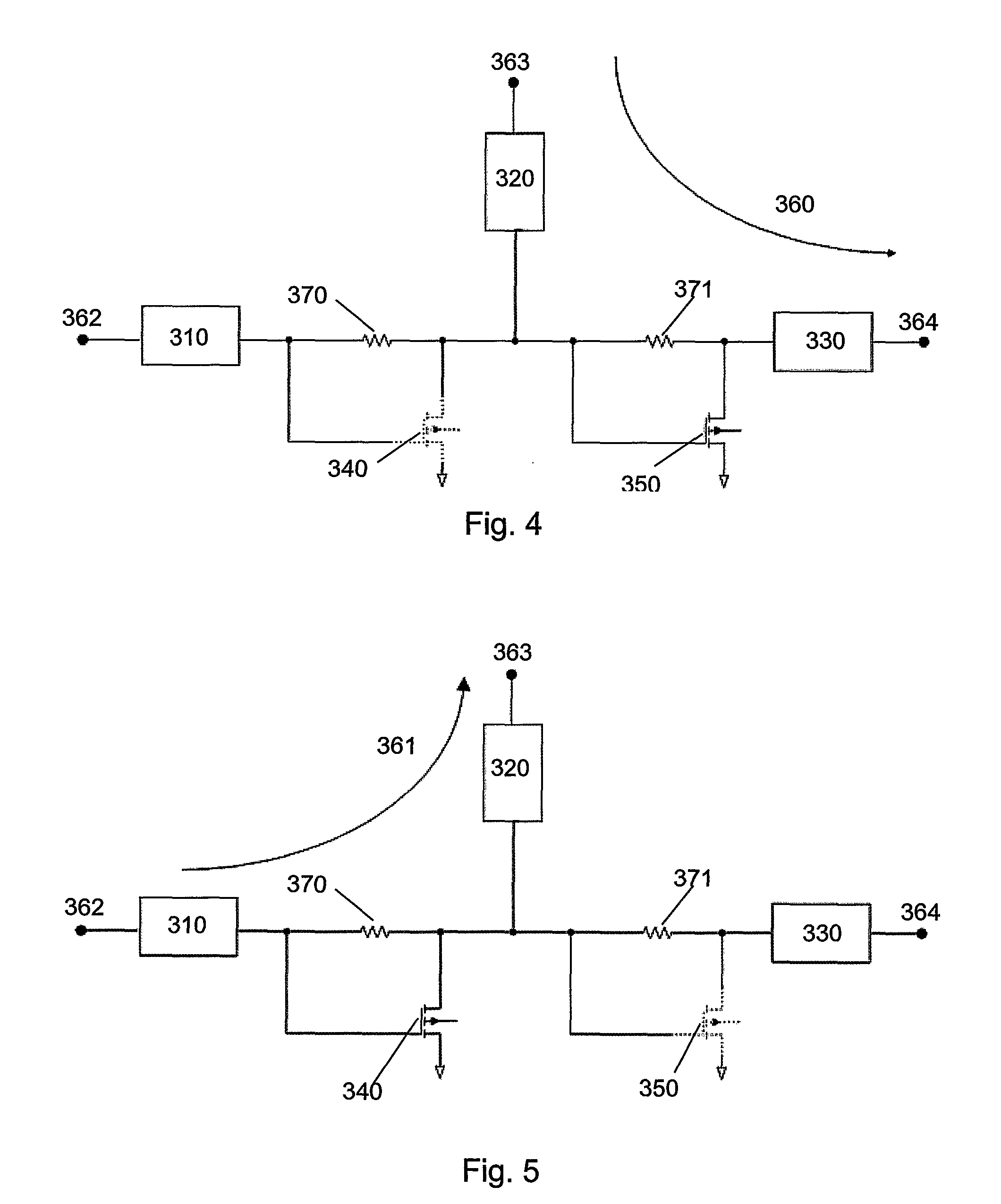Switch-less bidirectional amplifier
a bidirectional amplifier and switchless technology, applied in the direction of two-way amplifiers, gated amplifiers, amplifiers with field-effect devices, etc., can solve the problems of signal loss, signal loss has a negative impact on the linearity and noise figure of the transceiver circuit, and switches occupy valuable area on the circuit chip. achieve the effect of reducing chip area and high electron mobility
- Summary
- Abstract
- Description
- Claims
- Application Information
AI Technical Summary
Benefits of technology
Problems solved by technology
Method used
Image
Examples
Embodiment Construction
[0052]Turning now to FIG. 2, a first embodiment of the present invention is shown. Here, an example of the inventive bi-directional amplifier is shown, where reference numbers 230 and 240 depict a first and a second transistor connected in an anti-parallel configuration in relation to each other using parallel feedback.
[0053]Anti-parallel in this case means the gate terminal of the first transistor 230 is connected to the drain terminal of the second transistor and the gate terminal of the second transistor 240 is connected to the drain terminal of the first transistor 230. The resistor 270 between the first and second transistors (230, 240) is one way of achieving equal impedance for the two transistors. Of course any other means, such as an impedance matching network may be used to achieve the equal input impedance for the two transistors.
[0054]Even though the embodiments of the present invention described in the accompanying drawings use FETs (Field Effect Transistors) as amplifi...
PUM
 Login to View More
Login to View More Abstract
Description
Claims
Application Information
 Login to View More
Login to View More - R&D
- Intellectual Property
- Life Sciences
- Materials
- Tech Scout
- Unparalleled Data Quality
- Higher Quality Content
- 60% Fewer Hallucinations
Browse by: Latest US Patents, China's latest patents, Technical Efficacy Thesaurus, Application Domain, Technology Topic, Popular Technical Reports.
© 2025 PatSnap. All rights reserved.Legal|Privacy policy|Modern Slavery Act Transparency Statement|Sitemap|About US| Contact US: help@patsnap.com



